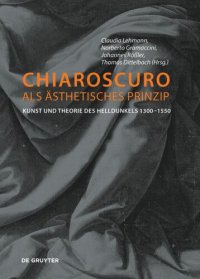
Ebook: Chiaroscuro als ästhetisches Prinzip: Kunst und Theorie des Helldunkels 1300–1550
Author: Claudia Lehmann (editor), Norberto Gramaccini (editor), Johannes Rößler (editor), Thomas Dittelbach (editor)
- Year: 2018
- Publisher: De Gruyter
- Language: German
- pdf
In the Italian theory and practice of art of the Renaissance, the term chiaroscuro primarily refers to the articulation of sculptural qualities, i.e. depth or rilievo. In this context, rilievo refers to an innovative design principle, which replaces the inherent value of medieval chromatic shading with achromatic shades. By contrast, paintings and graphic art in the northern Alpine region tended to create the depth in the surface of objects by using light-dark effects. Based on this comparison, the book deals with chiaroscuro as an aesthetic principle, which should be understood as the key signature of European art history as a whole between 1300 and 1600.
-
Chiaroscuro in painting, sculpture and graphic art
-
Contributions to the theory and practice of art in the Renaissance